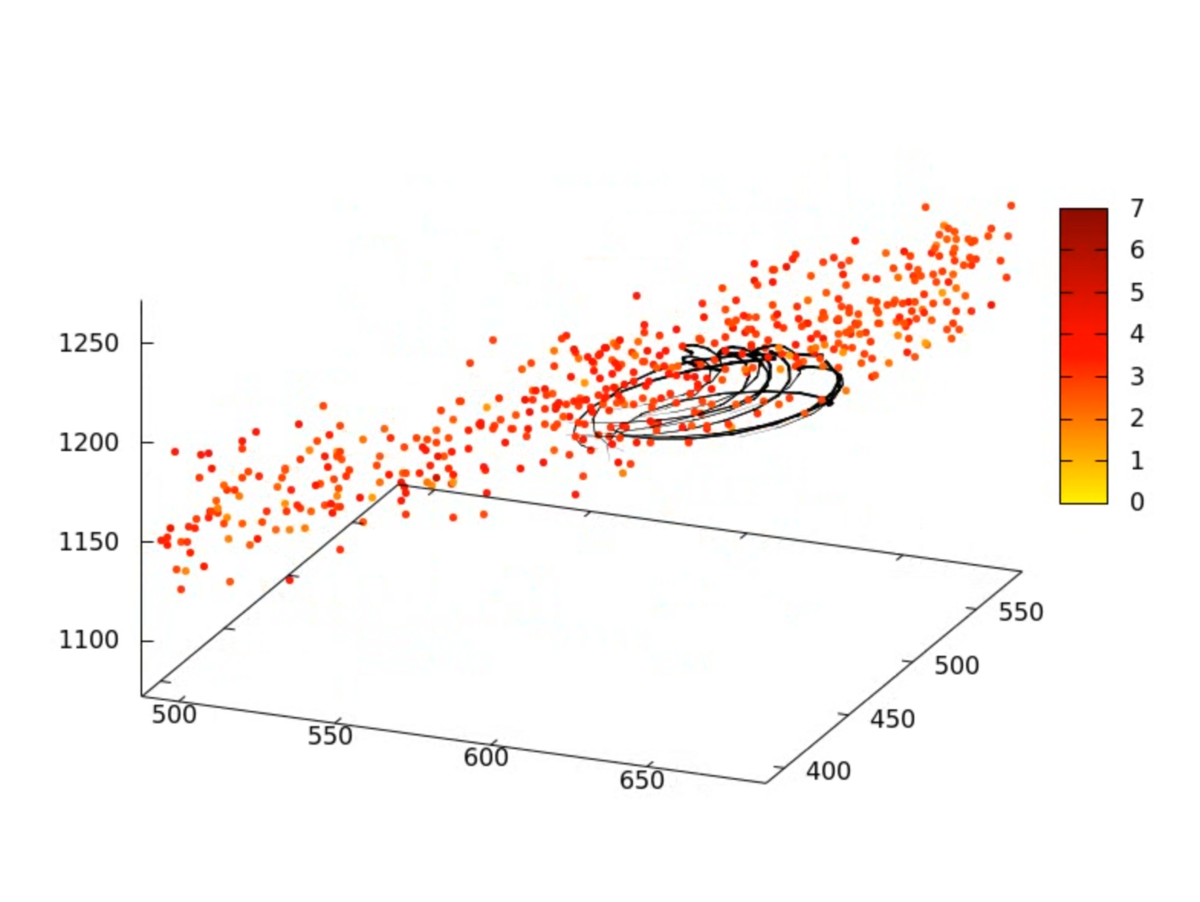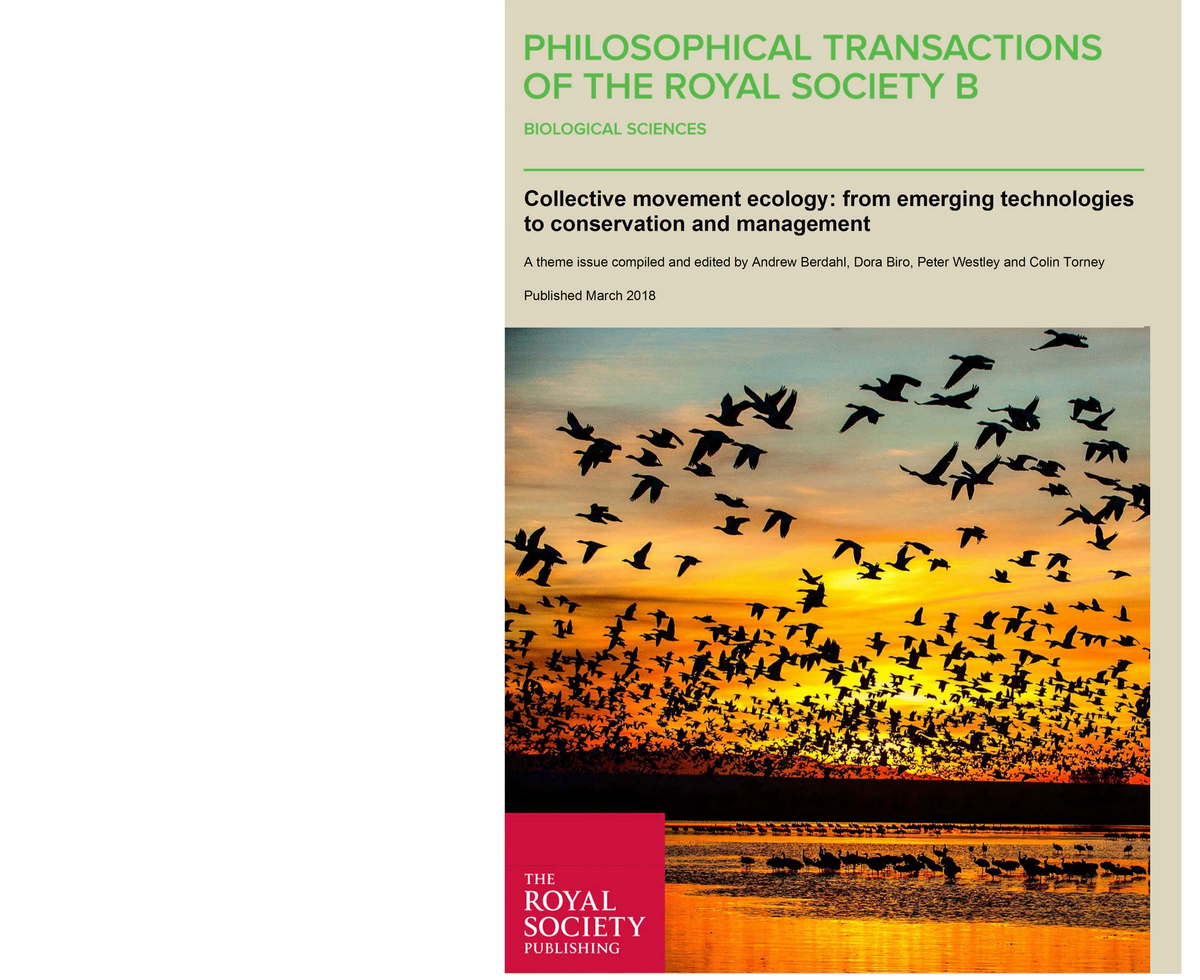Konstanz research featured in Phil Trans B
Theme issue on collective movement published today includes two Konstanz studies on collective sensing and leadership in animal groups.
Collective behaviour research from the University of Konstanz and the Max Planck Institute for Ornithology (MPIO) is published in a March 26th themed issue of the Philosophical Transactions of the Royal Society B.
The issue—titled Collective Movement in Ecology: From Emerging Technologies to Management Implications—features research by eight Konstanz scientists in two separate articles that offer clues on the role of collective sensing in migrating white storks and inferring influence and leadership in moving animal groups.
Synchronisation, coordination, and collective sensing
A flock of migrating birds circling effortlessly in the sky is a picturesque prelude to autumn. But whether or not these soaring migrants are coordinating their movement to take advantage of the complex and constantly-changing thermal updrafts has so far remained unknown.
Now, with the help of 27 tagged storks on their 1000 km annual migration from Germany to Spain, researchers from Konstanz have shown that birds coordinate their movements when circling together. Further, the interdisciplinary team—comprising ecologists, behavioural biologists and physicists—have demonstrated for the first time that analysing the movement of birds in thermals can reveal the architecture of airflow in thermals themselves.
Many migrating birds use rising columns of air—known as thermals—to help them keep energy costs down during long-haul flights. To thermal efficiently, birds need to stay close to the centre of the thermal where updraft is highest. But manoeuvring within updrafts can be challenging and migrating birds can’t afford to waste energy. This led the researchers to wonder if perhaps soaring migrating were getting by with a little help from their friends.
To explore how migrating birds interact with each other in thermals, researchers analysed high-resolution GPS trajectories of individuals from a flock of white storks during circling events. An analysis of 1,414,226 locations revealed that when storks are circling together in a thermal updraft, different flock members experience different areas of the thermals—thus allowing the group to better explore the complex structure through the process of collective sensing. Further, the storks are coordinating their motion to circle together and forming dynamically changing subgroups—allowing them to use the thermals most efficiently.
Thermals, it turns out, are complicated. “Imagine the airflow as a wobbly tube,” says Máté Nagy, a postdoctoral researcher in the MPIO Department of Collective Behaviour and lead author on the study. The location of the centre of this tube—the key zone for thermalling birds—is dynamically changing because of varying horizontal winds at different altitudes. The shape and size of thermals can also change. “Putting this together, we get a very complex structure.”
Using novel techniques, Nagy spearheaded an analysis that used the movement of the storks to reconstruct the shape of the thermal. “On the spatial and temporal scale, which is important for birds, thermals are very hard to measure,” he says. The impact of this result goes beyond understanding migration—it has applications for humans, such as paraglider and hang glider pilots, and for drones and unmanned aerial vehicles (UAVs).
The research is a joint effort between the MPIO departments of Collective Behaviour (Konstanz) and Migration and Immuno-Ecology (Radolfzell). Máté Nagy, a bio-physicist, is lead author on the paper and Andrea Flack, an expert on stork migration, is the final of the paper. Other authors are Iain Couzin, Wolfgang Fiedler, and Martin Wikelski.
Influence and leadership in collective decision-making
For animals, making decisions can literally be a matter of life or death. Take a mob of meerkats scratching for scorpions in the Kalahari Desert. Perhaps one mob member has found a fruitful food patch, but the rest of the group is moving on. Should that member stay and gorge while exposing itself to hungry hawks? Or is it better to remain in the safety of the group but go a little hungry? For group-living animals, decision-making is a complex process that involves merging one’s own interests—finding food, evading predators—with the interests of group members. Nevertheless, collective decisions usually end up hinging on two aspects of group living: influence and leadership.
Who controls group decisions? It’s a simple sounding question that, in reality, is difficult to study and quantify. “People have tried to tackle it in many different ways over its long history,” says Ariana Strandburg-Peshkin, a Human Frontier Science Program postdoctoral fellow at the Max Planck Institute for Ornithology and the University of Zurich. Few points in that long history would be as transformative as the present, when technological advances allow data to be captured at unprecedented scale. “Having the ability to collect such amazing datasets is really exciting, but there is a long way to go to turn that deluge of data into meaningful insights,” Strandburg-Peshkin says.
Now, researchers from MPIO have taken a big step in that direction. An interdisciplinary team of four scientists, led by Strandburg-Peshkin, have produced a road map to help researchers overcome the analytical and conceptual challenges that have impeded understanding of influence and leadership in animal groups.
The paper assembles existing perspectives and methods of quantifying influence and leadership—reviewing advantages and disadvantages of these methods as well as an overview of the current state of the topic. It also introduces a conceptual framework that offers a unified method for the study of leadership and influence in the future. The framework highlights how researchers can build up from single events (“influence instances”) to reveal the distribution of “total influence” over group decisions as well as the “consistency of influence” across decisions or over time.
“One benefit of such a framework is that it can help researchers working on different species, and using different methods, to organise their thinking in ways that eventually allow for comparisons across systems,” says Strandburg-Peshkin.
“My main hope is that people will find the paper useful, and that it will help all of us think deeply about how we conceptualise and quantify influence and leadership in groups. In addition to being used as a reference for existing methods, I hope the paper also encourages the development of new methods to address this fascinating topic.”
Ariana Strandburg-Peshkin is a computational biologist and lead author on the paper, who will start a position as a Gips-Schüle Junior Research Group Leader at the University of Konstanz in June 2018. Damien Farine, a Principal Investigator in the MPIO Department of Collective Behaviour, is final author on the paper. Other authors are Meg Crofoot, an anthropologist from UC, Davis, and Danai Papageorgiou, a PhD student from MPIO.


